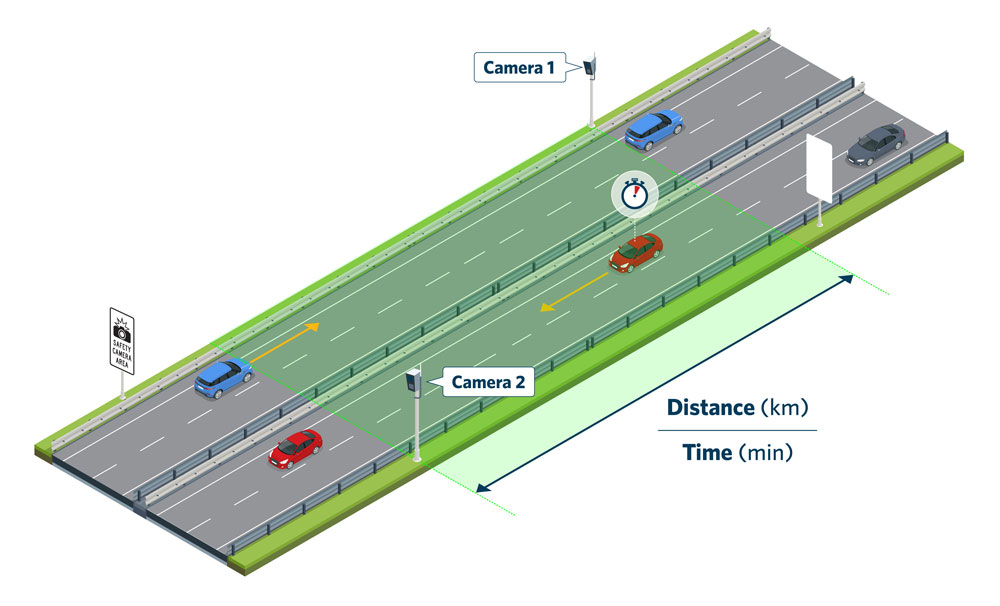These measure a vehicle’s speed moving towards or away from the camera. They also identify:
They use infrared flash to see vehicles in the dark.
These work by calculating a vehicle’s speed along the length of road between 2 cameras. They measure the time the vehicle takes to travel between the cameras and calculate the average speed (distance divided by time).
All future average speed / point-to-point (P2P) safety cameras will use automated number plate recognition (ANPR) technology which reads number plates. ANPR matches a car’s number plate as it enters and exits the average speed measurement zone.

Diagram showing how average speed safety cameras work.
These detect vehicles that don’t stop at a red light. They track a vehicle approaching an intersection, and if the vehicle crosses the stop line when the light is red, they take a photo of the back of the vehicle.

Diagram showing how red light safety cameras work.
As well as detecting red light offences, these detect a vehicle’s speed when travelling through an intersection, to capture speeding vehicles at any phase of the light. International evidence shows these cameras are more effective at reducing deaths and serious injuries at intersections than red light safety cameras alone.
These work in a similar way to static speed safety cameras, but they sit inside a van, car or trailer so they can be moved around.
Mobile safety cameras won't be signposted, instead we'll use an 'anytime anywhere' approach.
These cameras detect people using their phone or not wearing their seatbelt while driving. They were trialled in Tāmaki Makaurau Auckland for the first time in 2022 but need further trials and a law change before they can be used to detect offences.
Mobile phone and seatbelt detection trial
The number of safety cameras will increase over time. All new safety cameras are carefully tested and must go through a rigorous approval process before they’re used. We’ll calibrate and certify them every year to make sure they’re working as they should.